Limited Edition Art Prints: What Makes Them Special?
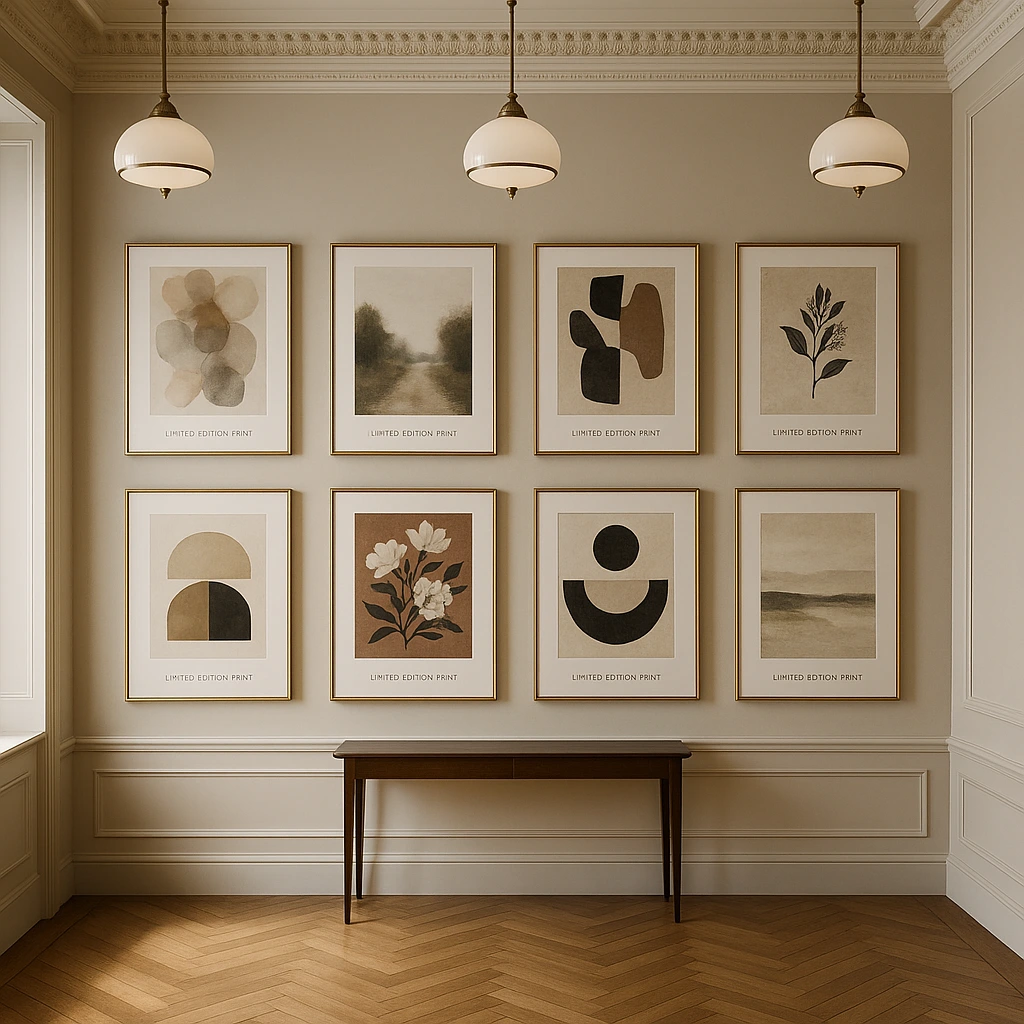
Limited Edition Art Prints: What Makes Them Special?
In today’s evolving art marketplace, limited edition art prints occupy a fascinating middle ground between unique originals and mass-produced posters. These carefully crafted reproductions offer collectors something truly special: exclusivity combined with accessibility. Whether you’re an experienced collector or simply looking to elevate your home décor beyond generic wall art, limited editions represent a gateway to owning something with genuine artistic value and potential investment appeal.
The allure of limited edition prints connects to our broader cultural fascination with scarcity and authenticity in a mass-produced world—much like our obsession with vintage items. By the end of this guide, you’ll understand what makes these artworks special, how to identify genuine pieces, and why they might deserve a place in your collection or home.
What are limited edition art prints?
Limited edition art prints are reproductions of original artwork created in a predetermined, finite quantity. Unlike mass-produced posters or open edition prints that can be reproduced indefinitely, limited editions are restricted to a specific number—creating inherent scarcity and exclusivity.
When artists or publishers release limited edition prints, each piece is typically numbered in sequence (e.g., 24/150, indicating it’s the 24th print in a series of 150). This numbering system serves as both inventory control and a guarantee to collectors that only the stated quantity will ever exist. Most limited editions are also hand-signed by the artist, further authenticating the connection between creator and artwork.
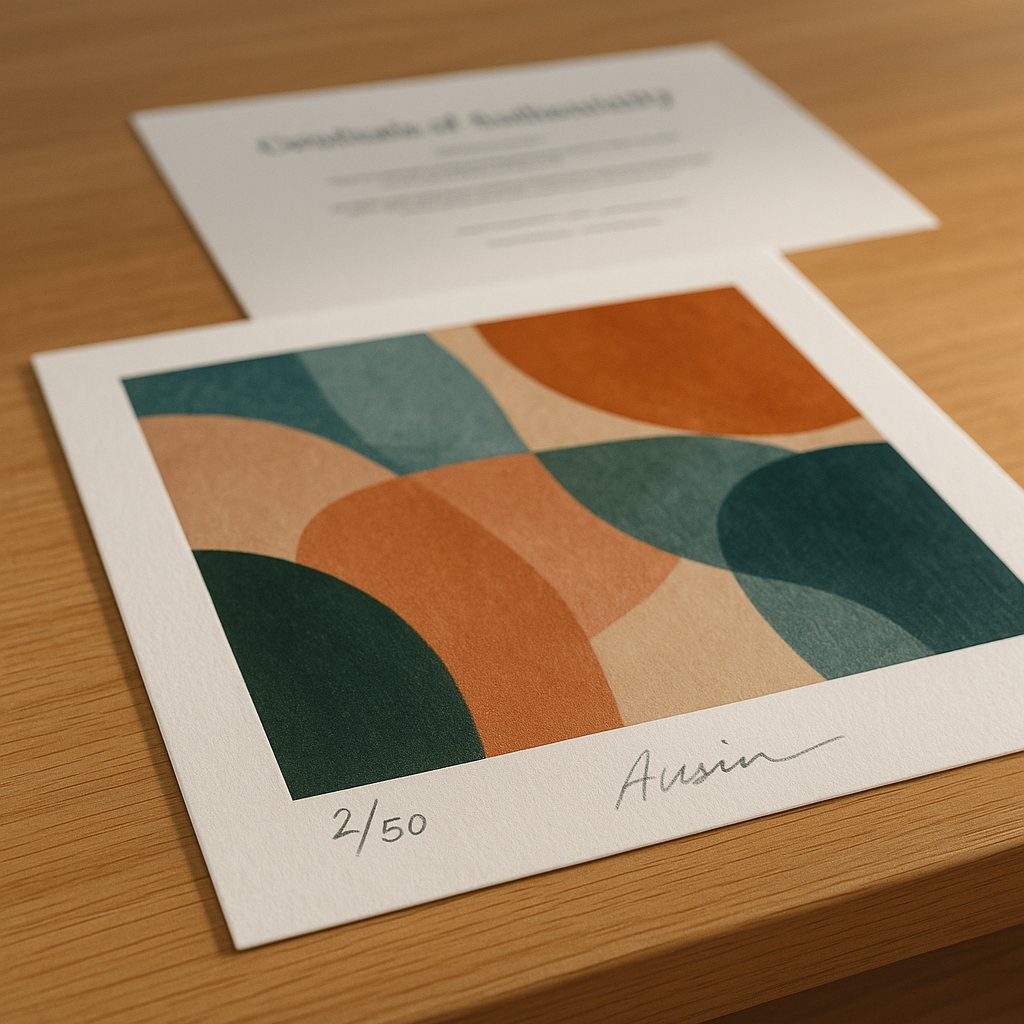
Several printing methods produce limited editions, but giclée prints have become the gold standard in the contemporary market. Using archival pigment inks and high-resolution digital scanning, giclée technology achieves remarkable color accuracy and longevity that earlier reproduction methods couldn’t match. These prints can last 100+ years without fading when properly displayed and preserved.
The entire limited edition concept operates on a foundation of trust between artists, publishers, and collectors. This relationship is formalized through certificates of authenticity that document essential details about the artwork:
- artist name and signature verification
- edition size and individual print number
- printing method and materials
- release date
- publisher information
Professional limited editions often include additional features that enhance their legitimacy, such as embossed publisher seals, specially watermarked papers, or holographic stickers that cannot be easily counterfeited.
The role of certification and authenticity
Provenance—the documented history of an artwork’s origin, ownership, and authenticity—matters tremendously in the limited edition market. Without proper authentication, even the most visually stunning print loses significant value. Legitimate limited editions always come with documentation that establishes their authenticity.
The certificate of authenticity (COA) functions as the print’s “passport,” containing vital information about its creation and legitimacy. For serious collectors, this documentation becomes almost as valuable as the artwork itself—particularly for investment-grade prints that may be resold in the future.
If you’re drawn to the precision and authenticity of limited edition art, consider exploring the Bauhaus Wall Art – Modern Geometric Abstract Print as an excellent example of certified, limited edition artwork that combines historical design influence with contemporary printing standards.
Why are limited editions valuable?
The value proposition of limited edition art prints extends beyond mere aesthetic appeal. Their desirability stems from fundamental economic principles and collector psychology that have shaped art markets for centuries.
Scarcity drives value in nearly every collectible market, and limited edition prints are no exception. When artists cap production at a specific number—whether 10 prints or 1,000—they artificially restrict supply. As demand increases over time while supply remains fixed, prices naturally tend to appreciate. Smaller edition sizes generally command higher prices and experience greater appreciation than larger runs, reflecting their comparative rarity.
Artist reputation significantly impacts value trajectory. Established artists with museum exhibitions, gallery representation, and auction history produce limited editions that typically perform better in secondary markets. However, identifying emerging artists before their market breakthrough can yield exceptional returns for astute collectors.
Beyond potential financial returns, limited editions offer collectors psychological satisfaction derived from ownership exclusivity. There’s genuine pleasure in possessing something relatively few others can claim—particularly when the artwork carries cultural significance or artistic importance.
Well-executed limited editions represent a nuanced balance between exclusivity and accessibility. While one-of-a-kind paintings might sell for six or seven figures, quality limited editions by the same artist might be available for a fraction of that price—democratizing art ownership without completely sacrificing collectibility.
Limited vs. open edition prints—a practical comparison
Understanding the fundamental differences between limited and open editions helps clarify their respective market positions:
- Production quantity: Limited editions have a predetermined maximum (e.g., 250 prints); open editions have unlimited production potential
- Numbering: Limited editions are individually numbered (e.g., 45/250); open editions typically lack numbering
- Artist signature: Limited editions are generally hand-signed; open editions often feature printed signatures or none
- Certificate: Limited editions include authentication documentation; open editions rarely provide certificates
- Price point: Limited editions command premium prices; open editions are more affordably priced
- Investment potential: Limited editions may appreciate; open editions rarely gain significant value
- Exclusivity: Limited editions offer ownership distinction; open editions provide decorative value without scarcity
For collectors building a meaningful art portfolio, limited editions offer a compelling middle ground between original works and mass-produced decorative items. They combine artistic legitimacy with relative affordability, making them particularly attractive entry points into serious collecting.
To explore additional collecting insights and market trends that might influence your purchasing decisions, the Artmandre Blog provides regularly updated perspectives on art market developments and collecting strategies.
How to buy & care for limited edition prints
Purchasing limited edition prints requires some basic knowledge to ensure you’re making sound acquisitions. Whether buying from galleries, art fairs, or online platforms, several universal principles apply.
When evaluating potential purchases, focus first on authentication elements. Legitimate limited editions should always include:
- the artist’s original signature (typically pencil for traditional prints)
- edition numbering clearly marked
- a certificate of authenticity from the publisher or gallery
- details regarding paper quality, printing method, and dimensions
Reputable sellers matter tremendously in the print market. Established galleries, publisher-direct sales, artist studio purchases, and vetted online platforms generally offer greater protection against misrepresented or counterfeit works. Research sellers thoroughly, particularly when significant investments are involved.
Paper quality directly impacts both aesthetic appeal and long-term preservation. Premium limited editions utilize acid-free, archival papers specifically designed for art reproduction.
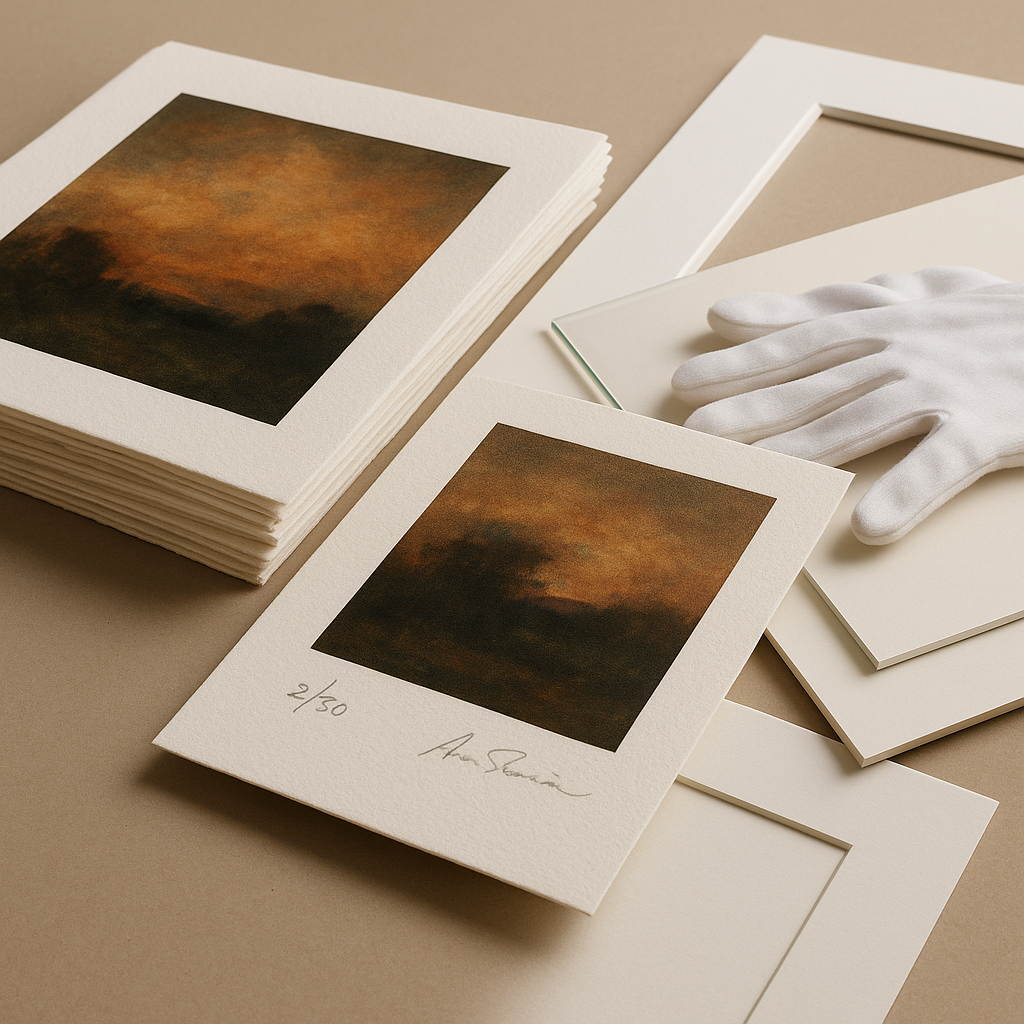
These conservation-grade materials resist yellowing, brittleness, and deterioration that affect lesser papers over time.
Once you’ve acquired quality limited edition prints, proper care ensures their longevity and preserves investment value:
- Frame using UV-protective glass/acrylic to prevent fading
- Select acid-free matting and backing materials
- Hang artwork away from direct sunlight
- Maintain stable environmental conditions (avoid humidity extremes)
- Handle prints only with clean cotton gloves
- Store unframed prints flat in acid-free portfolios
- Document provenance and retain all certificates/paperwork
Professional framing represents a worthwhile investment for valuable limited editions. Custom framers can recommend conservation-grade materials that protect artwork while enhancing its visual presentation. The additional cost provides both aesthetic and preservation benefits that generic framing cannot match.
For collectors interested in modernist aesthetics and geometric design, limited edition prints inspired by historical art movements offer particularly compelling value. The Bauhaus Exhibition Poster – Geometric Modernist Art exemplifies how contemporary limited editions can capture influential design movements while providing exceptional visual impact for modern interiors.
Beyond physical care, maintain comprehensive records for each limited edition in your collection. Document purchase information, certificates, condition reports, and any communication with artists or galleries.
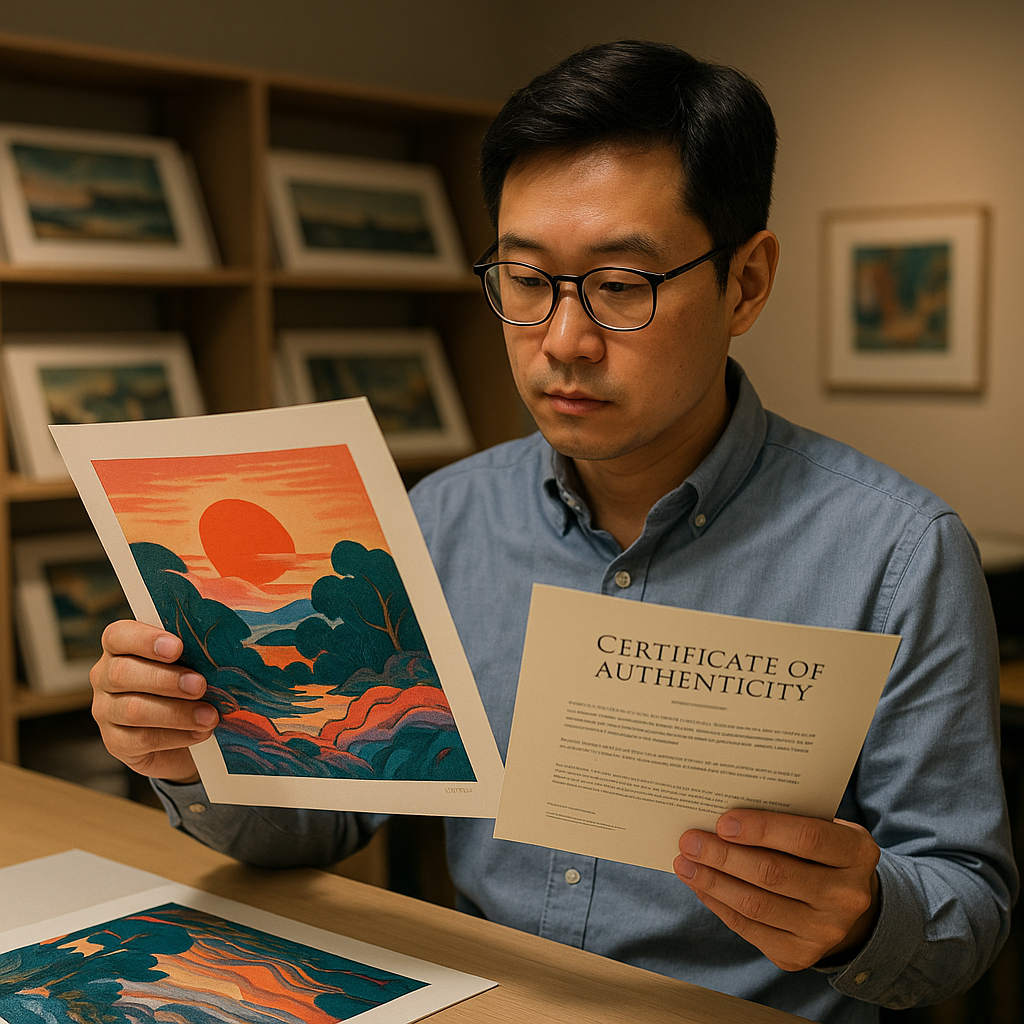
This documentation proves invaluable for insurance purposes and future sales or estate planning.
The enduring appeal of limited edition prints
Limited edition prints occupy a distinctive position in the art ecosystem—bridging fine art exclusivity and decorative accessibility. Their popularity continues growing as collectors recognize their unique combination of artistic legitimacy, relative affordability, and potential investment value.
For serious collectors, limited editions offer strategic portfolio diversification. While blue-chip originals might anchor a collection, thoughtfully selected limited editions can provide exposure to emerging artists, experimental techniques, or historical movements that might otherwise remain financially inaccessible.
Interior designers increasingly recommend limited editions to clients seeking distinctive wall art with genuine artistic credentials. The numbered, signed nature of these works adds conversation value beyond purely decorative pieces, while still accommodating specific aesthetic requirements and size constraints.
Digital technology has dramatically expanded printing capabilities, allowing contemporary artists to create limited editions with unprecedented color accuracy, textural elements, and experimental techniques. These advancements have elevated print quality while preserving the tradition of controlled scarcity that defines the limited edition concept.
For artists themselves, limited editions provide crucial revenue streams and audience expansion. By making their imagery available to collectors at various price points, artists can sustain their practice while reaching audiences who might never afford their original works. This accessibility helps build collector relationships that may lead to original purchases as budgets increase.
The emotional satisfaction derived from owning limited edition artworks shouldn’t be underestimated. There’s genuine pleasure in living with images that resonate personally while knowing they represent authentic artistic expression rather than mass production.
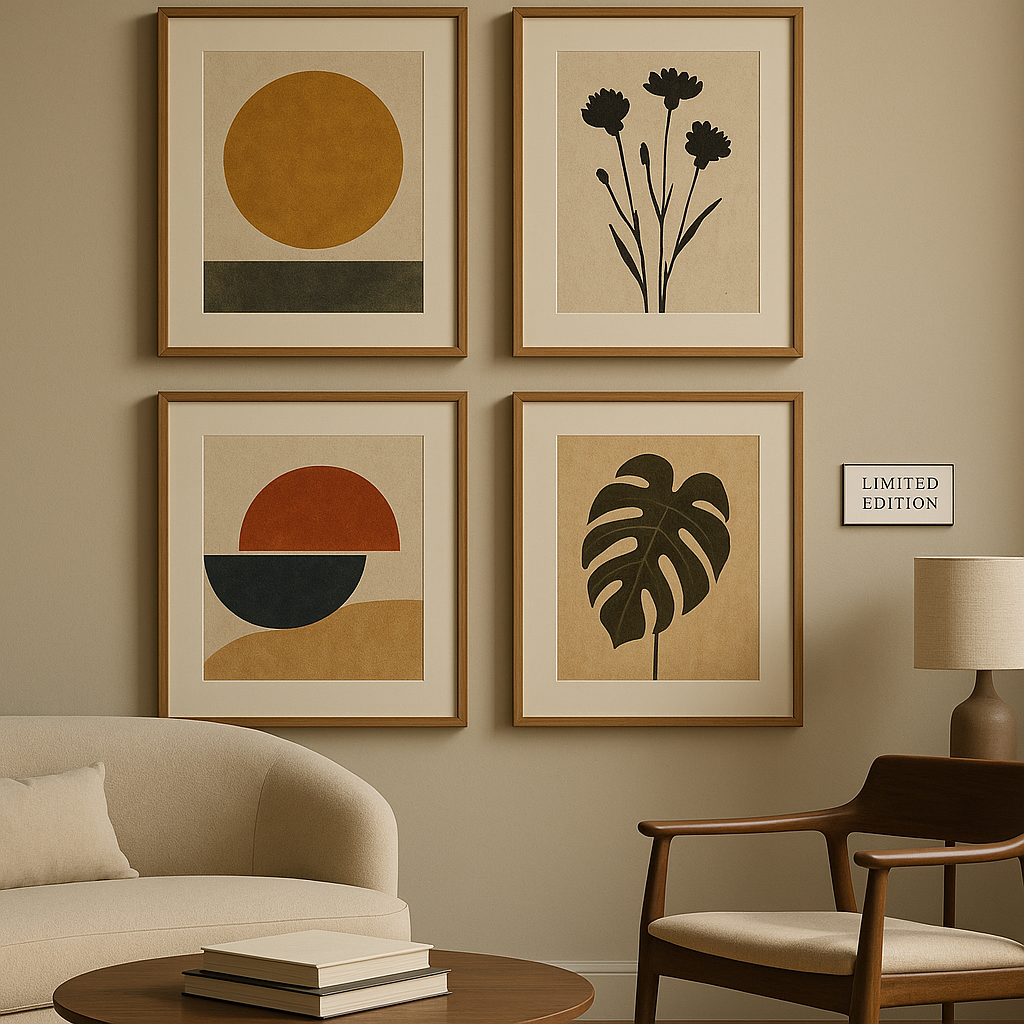
This connection between artwork and owner represents the ultimate value proposition beyond any investment consideration.
Conclusion
Limited edition art prints occupy a sweet spot in the collecting landscape—combining artistic legitimacy with financial accessibility in ways that benefit creators and collectors alike. Their carefully controlled production, authentication protocols, and potential investment value set them apart from purely decorative reproductions.
For newcomers to art collecting, quality limited editions offer an ideal entry point to develop connoisseurship without extraordinary financial commitment. The research process itself—learning about artists, printing techniques, and market dynamics—provides intellectual rewards beyond the pleasure of ownership.
Whether your interest stems from investment potential, aesthetic appreciation, or the desire to support working artists, limited edition prints deserve consideration as meaningful additions to your home or collection. Their enduring appeal connects to our broader cultural fascination with authenticity and exclusivity in an increasingly mass-produced world.
Consider examining your living and working spaces with fresh eyes, identifying walls that might benefit from the distinctive presence that limited edition art provides. And if you’re intrigued by the historical context that informs many contemporary limited editions, explore our insights on why we’re so obsessed with vintage to deepen your appreciation of art’s cultural continuum.
Frequently asked questions
What does ‘limited edition’ mean in art prints?
A limited edition art print means only a specific number of prints are made, increasing its exclusivity and potential value.
How can I tell if my art print is authentic?
Look for a signature, edition number, and a certificate of authenticity from the artist or publisher.
Are limited edition prints a good investment?
They can be, especially for sought-after artists or small edition sizes, but value can fluctuate with market trends.
What’s the difference between open and limited edition prints?
Open editions have no set limit; anyone can keep buying them, while limited editions have a fixed quantity, making them rarer.
How should I care for my limited edition prints?
Frame with UV protection, use acid-free materials, and hang away from direct sunlight for best preservation.